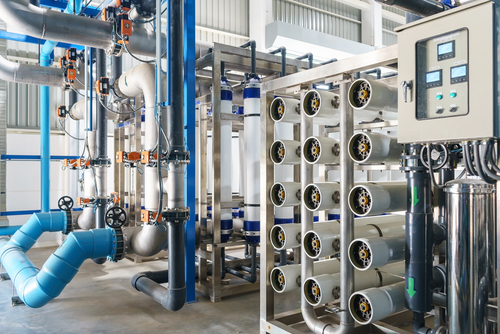
Reverse osmosis systems have become increasingly popular for those looking to improve the quality of their drinking water. In this comprehensive guide, we will walk you through everything you need to know about reverse osmosis systems, including how they work, their benefits, maintenance, and more. By the end of this guide, you'll have a thorough understanding of reverse osmosis systems and be able to make an informed decision about whether it's the right choice for your home.
How Does Reverse Osmosis Work?
Reverse osmosis is a water purification process that uses a semipermeable membrane to remove impurities from water. Here's how it works:
- Water is pushed through the membrane, which filters out contaminants such as lead, chlorine, bacteria, and other pollutants.
- The purified water is collected and stored in a separate tank, while the impurities are flushed away.
- Reverse osmosis systems typically have multiple stages of filtration to ensure that the water is thoroughly cleaned.
Benefits of Reverse Osmosis Systems
There are several benefits to using a reverse osmosis system in your home:
- Removes impurities: Reverse osmosis systems can remove up to 99% of contaminants in water, making it safe and clean to drink.
- Improves taste: By removing pollutants and chemicals, reverse osmosis systems can enhance the taste of water.
- Cost-effective: Investing in a reverse osmosis system can save you money in the long run by eliminating the need to buy bottled water.
- Environmentally friendly: By reducing the use of plastic water bottles, reverse osmosis systems help to minimize environmental impact.
Types of Reverse Osmosis Systems
There are several types of reverse osmosis systems available, each with its own unique features and benefits:
1. Under-Sink Reverse Osmosis Systems
These systems are installed under the sink and are typically compact in size, making them ideal for smaller spaces.
2. Countertop Reverse Osmosis Systems
Countertop systems are portable and easy to install, making them a convenient option for those who rent or move frequently.
3. Whole House Reverse Osmosis Systems
These systems are installed at the point where water enters your home, providing purified water to every faucet and appliance.
Maintenance of Reverse Osmosis Systems
Proper maintenance is essential to ensure that your reverse osmosis system continues to perform effectively. Here are some tips for maintaining your system:
- Replace filters regularly: Filters should be replaced according to the manufacturer's recommendations to maintain water quality.
- Clean the system: Periodically clean the membrane and other components of the system to prevent clogs and buildup.
- Check for leaks: Inspect the system for any leaks or damage and make repairs as needed to prevent water wastage.
Choosing the Right Reverse Osmosis System
When selecting a reverse osmosis system for your home, consider the following factors:
1. Water Quality
Assess the quality of your water to determine the level of filtration needed for your reverse osmosis system.
2. Water Usage
Consider the amount of water your household uses daily to choose a system with the appropriate capacity.
3. Budget
Determine your budget and look for a system that offers the best value for your money in terms of features and performance.
4. Installation
Decide whether you want a system that requires professional installation or if you prefer a DIY-friendly option.
Conclusion
Reverse osmosis systems are a popular choice for homeowners seeking clean and purified drinking water. By understanding how reverse osmosis systems work, their benefits, maintenance requirements, and factors to consider when choosing a system, you can make an informed decision about whether it's the right solution for your home. With the information provided in this ultimate guide, you are now equipped to select and maintain a reverse osmosis system that meets your household's needs.